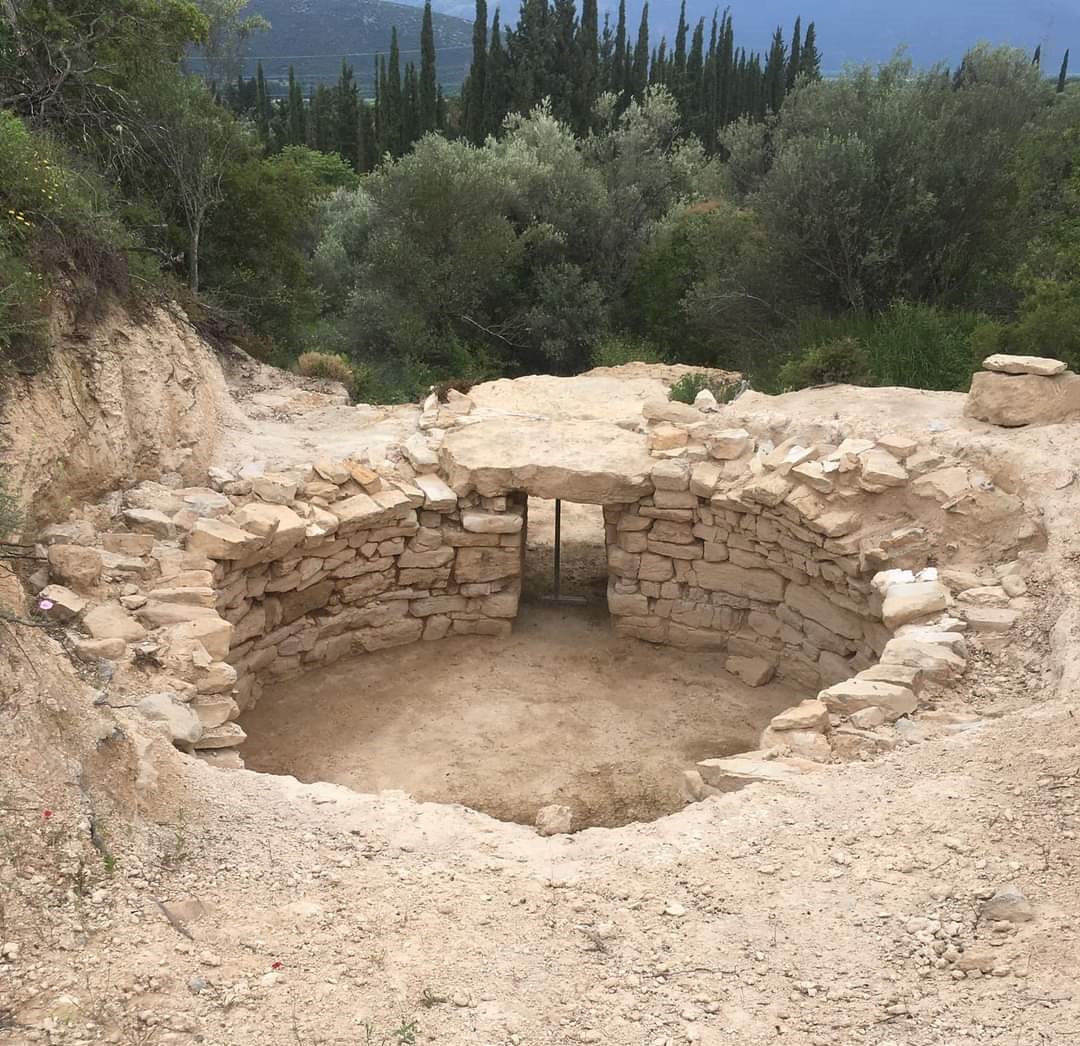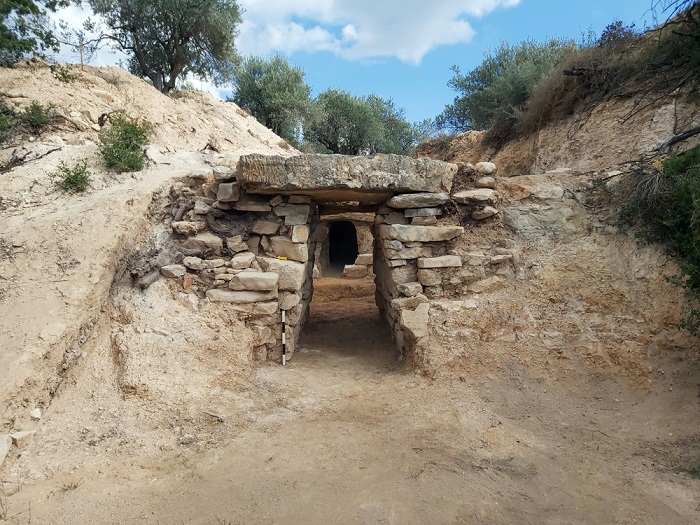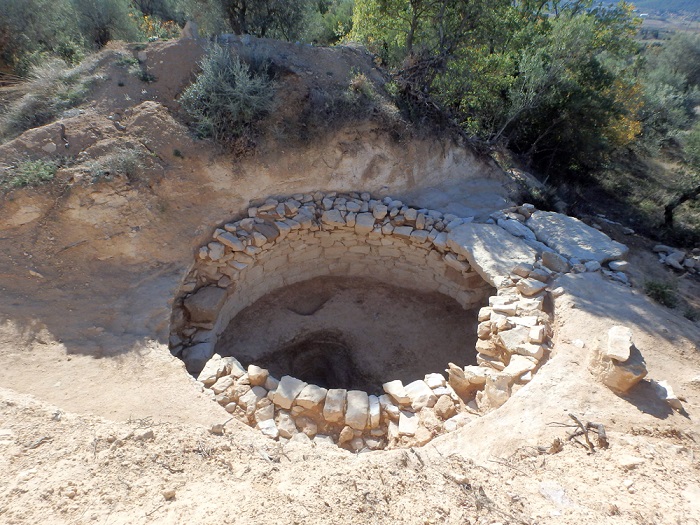
A vaulted tomb of the Mycenean Era excavated near Amphikleia, in the region of Phthiotis, Central Greece, might hint at a yet undiscovered Mycenean settlement close to the ruins of the ancient town of Tithronium.
Archaeologist Dr Petros Kounouklas, who led the surface excavations on behalf of the local Ephorate of Antiquities in winter 2022, tells Greek Reporter that the tomb is “the first proof of existence of a Mycenean tholos (vaulted) tomb in Phthiotis.”
Rare ancient artefacts discovered in Phthiotis Mycenean tomb
The monument, built between the 14th-13th centuries b.C., was looted in antiquity, and also used in the Roman Era, as Roman burial gifts were also found, Dr Kounouklas explains.
Besides human remains from ancient burials, excavations led to the discovery of golden jewelery and pottery characteristic of the Mycenean Era.
Two exquisite seals were also unearthed. One of them depicts a scene of the famed Taurokathapsia, the bull-leaping sport of the Minoan civilization.
“There was never a finding of a seal with a bull-leaping scene in Phthiotis before,” Dr Kounouklas says with excitement. “The only other similar finds were discovered at the Mycenean palace of Thebes and the vaulted tombs of Dimini in the Magnisia region, Thessaly.”
The maintenance and documentation of the findings from the tomb has concluded, and the Ephorate will be deciding about the details of placing them in exhibition, most probably at the Archaeological Museum of Lamia.
The tomb construction itself survives in very good condition, although the vault has collapsed. Efforts will be focusing on improving the monument’s accessibility to the public, now that the archaeological excavation has been completed.

Ancient town of Tithronium revealed
Archaeologists from the Ephorate of Antiquities of Phthiotis and Euritania decided to excavate near the site where the vaulted tomb was discovered, after receiving reports of a series of illegal excavations in the proximity, Dr Kounouklas recalls.
The monument is located 300m from the archaeological site of ancient Tithronium, a frontier town of ancient Phocis, on the side of Doris, mentioned in the writings of ancient Greek geographer Pausanias, who placed Tithronium at two kilometers distance from the ruins of the ancient Greek town of Amphikleia, near Delphi, Central Greece.
Like Tithronium and other Phocian towns, Amfikleia was destroyed by the Persian army of Xerxes I in his invasion of Greece in 480 BC. It was rebuilt more than a century later, around 346 BC, as recorded in a decree of the local Amphictyonic League.
Although the surviving ancient Acropolis of Tithronium dates to the Hellenistic Era, fragments of Mycenean pottery were also found on the surface of the ground, Dr Kounouklas notes.

In search of a yet-undiscovered Mycenean settlement
The discovery of the vaulted tomb at Tithroneum has shed light on the class system in the Valley of Kifissos, confirming the presence of Mycenean officials in the area during the palatial period of the Mycenean Civilization, Dr Kounouklas states.
“Although there were important Mycenean-Era findings in the area, such as the Mycenean cemetery in Kompotades and the Mycenean port in Livanates, we still needed either a vaulted tomb, a palace, or scribes in Linear B’ to confirm the presence of a Mycenean social structure during the 14th-13th centuries BC, and until now we had none of the three,” the archaeologist observes.
Whether the strategic area around, or near, the Acropolis of Tithronium could be hiding a Mycenean settlement – even one of palatial proportions – remains a mystery, as it has never been excavated.
“Such hypotheses can only be ruled out, or confirmed, by archaeological excavation,” Dr Kounouklas comments.
See all the latest news from Greece and the world at Greekreporter.com. Contact our newsroom to report an update or send your story, photos and videos. Follow GR on Google News and subscribe here to our daily email!



